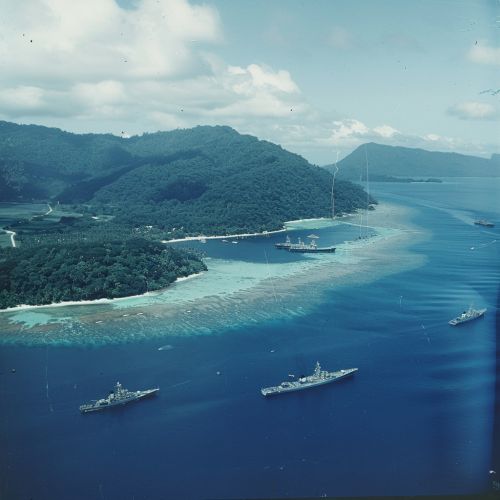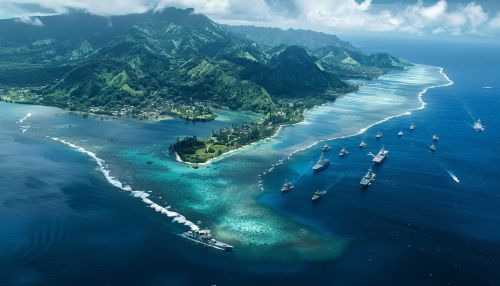Pacific War
Background
The Pacific War, also known as the Asia-Pacific War, was a theater of World War II that was fought in the Pacific and Asia. It began on 7 December 1941 with the attack on Pearl Harbor by Japan and ended in August 1945 with the surrender of Japan. The Pacific War saw the Allied powers pitted against the Empire of Japan, the latter aided by Thailand and to a lesser extent by the Axis allied Germany and Italy.


Origins
The origins of the Pacific War are rooted in the first Sino-Japanese War (1894–1895), in which Japan sought to become a global power by acquiring territories that held valuable natural resources. This ambition led to a series of conflicts and escalating tensions with Western powers, particularly the United States, which culminated in the attack on Pearl Harbor.
Japanese Expansion (1931–1941)
In the 1930s, Japan turned its attention to the rich resources of China and Southeast Asia. The invasion of Manchuria in 1931 and the subsequent second Sino-Japanese War (1937–1945) marked the beginning of Japan's territorial expansion in Asia. However, this expansion was met with economic sanctions from the West, which further strained relations and set the stage for the Pacific War.
Attack on Pearl Harbor
The Pacific War officially began with the Japanese attack on Pearl Harbor on 7 December 1941. This surprise military strike by the Imperial Japanese Navy against the United States naval base at Pearl Harbor, Hawaii, was intended as a preventive action to stop the U.S. Pacific Fleet from interfering with Japan's planned military actions in Southeast Asia.
Allied Response and Strategy
The attack on Pearl Harbor led to the United States' entry into World War II. The Allies, led by the United States, Australia, and the United Kingdom, implemented a strategy known as "island hopping," where they would bypass heavily fortified Japanese positions and instead capture strategic islands that were not well defended but capable of supporting the drive to the main islands of Japan.
Major Battles and Campaigns
The Pacific War saw some of the largest naval battles in history. These included the Battle of the Coral Sea, the Battle of Midway, and the Battle of Leyte Gulf. On land, major battles such as the Battle of Guadalcanal, the Battle of Saipan, and the Battle of Okinawa were fought.
End of the War
The Pacific War ended with the dropping of two atomic bombs on the Japanese cities of Hiroshima and Nagasaki in August 1945, followed by the surrender of Japan. The impact of these events led to the end of World War II and marked the beginning of the Atomic Age.
Aftermath and Legacy
The aftermath of the Pacific War had profound effects on the countries involved. For Japan, it marked the end of its military aggression and the beginning of a period of rapid economic growth and democratization. For the United States, it marked the beginning of its emergence as a global superpower.
